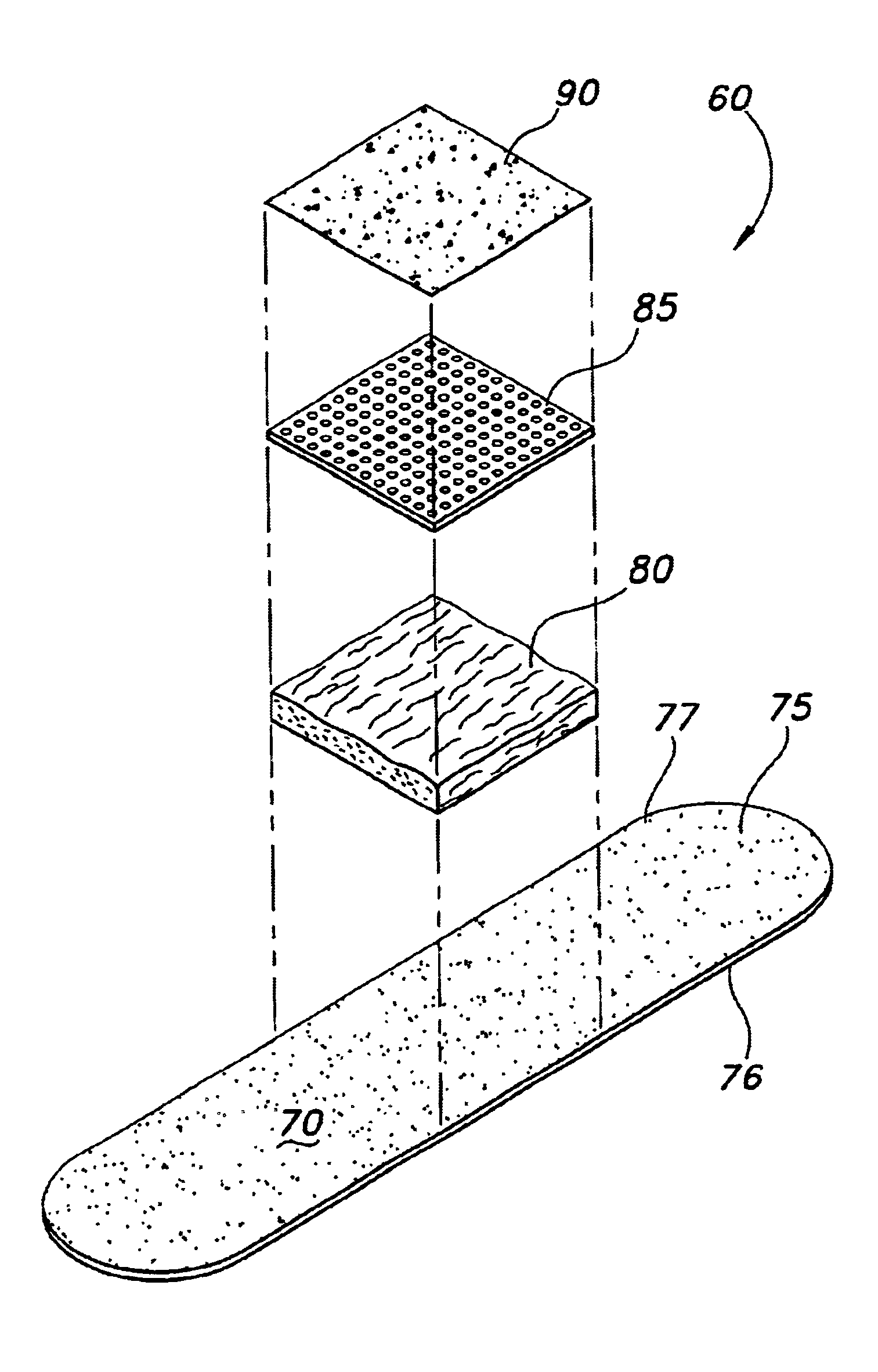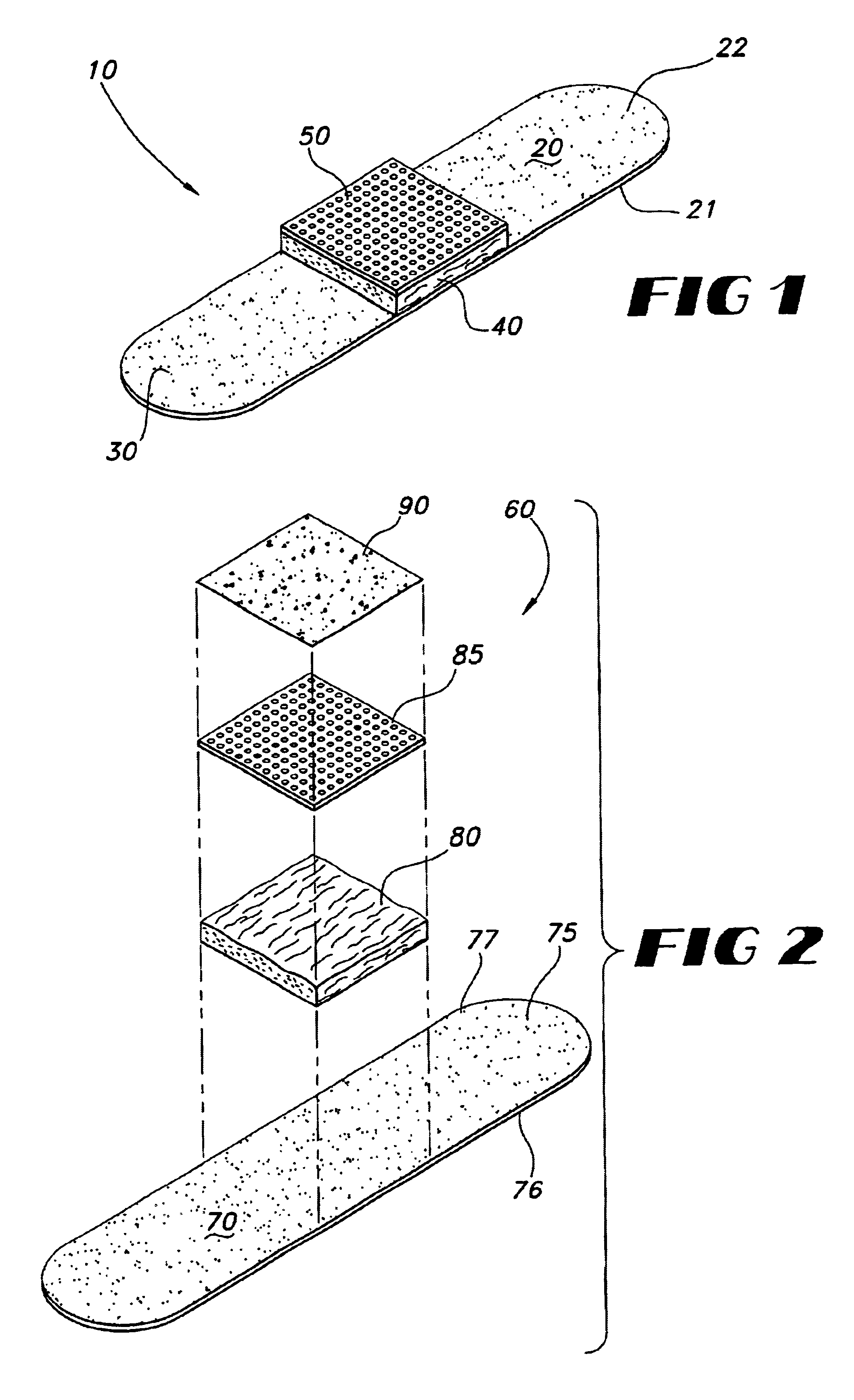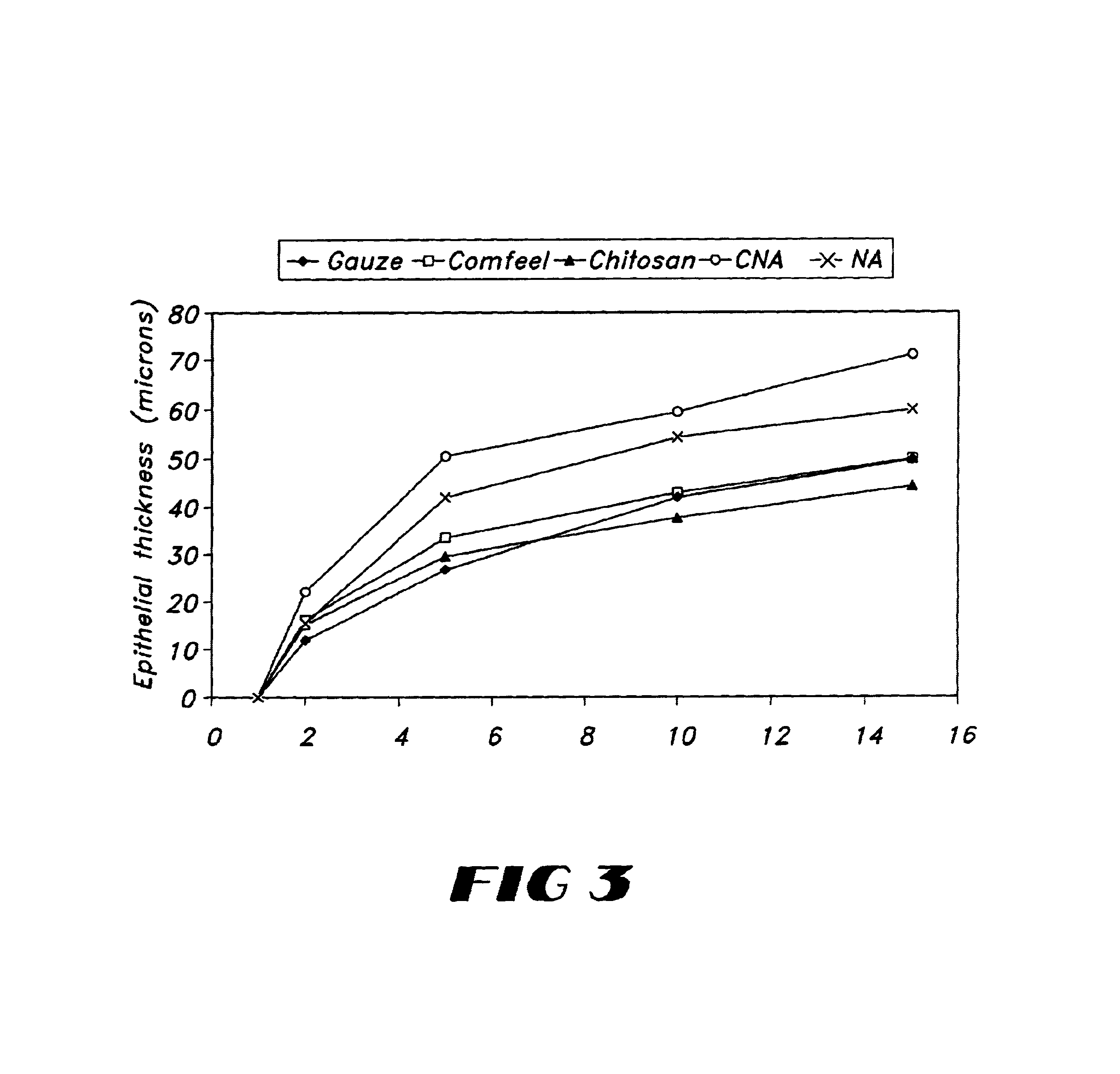Bandage, methods of producing and using same
a technology of bandages and dressings, applied in the field of dressings, can solve the problems of affecting the quality of dressings, and affecting the quality of dressings, and achieve the effect of promoting a healthy environment and promoting rapid healing
- Summary
- Abstract
- Description
- Claims
- Application Information
AI Technical Summary
Benefits of technology
Problems solved by technology
Method used
Image
Examples
example 1
[0068]This example illustrates the synthesis of a graft copolymer from poly(ethylene oxide) engrafted with 3-(trimethoxysilyl) propyl methacrylate that is useful in the coatings of the present invention.
[0069]Polyethylene oxide (“PEO”), supplied by Union Carbide under the name POLYOX Water Soluble Resins, was used. POLYOX WSR-205 having a molecular weight of about 600,000 g / mol was used in powder form. The reactive polar vinyl monomer used was 3-(trimethoxysilyl) propyl methacrylate supplied by Aldrich Chemical Company and manufactured by Dow Corning under the trade name, Dow Corning Z-6030 Silane. The peroxide initiator used was Varox DBPH, supplied by R. T. Vanderbilt Company, Inc.
[0070]The monomer is composed of two functional groups. The methacrylate function reacts with PEO after a free radical site is initiated with peroxide. The resultant modified PEO resin is still thermally processable as long as it is kept relatively dry. The crosslinking takes place from the other end of ...
example 2
[0081]The following samples were prepared using the same method and extruder temperatures as described above in Example 1 and using the proportions of ingredients indicated in Table 3 below. Since the first sample resulted in low extruder pressure, the temperatures were reduced to bring the extruder pressure into the proper range.
[0082]
TABLE 3Production parameters for extrusion / reaction.WEIGHT %VINYLTRI-WEIGHT %EXTRUDERCOMMENTS,ETHOXYVAROXPRESSUREOBSER-SAMPLESILANEDBPH(PSI)VATIONS2-1-a5.2592Very lowpressure,temperaturesreduced to120, 130,130, 1402-1-b5.25270Low meltviscosity2-22.15350Slight pressureincrease2-300700P205 control,high pressure,rough strands
[0083]Pellets from samples 2-1-b, 2—2 and 2-3 were stored for approximately ten weeks under laboratory conditions, exposed to ambient humidity. All three samples aged under these conditions, dissolved in water after standing overnight.
[0084]The resin samples prepared with triethoxy vinyl silane remained water-soluble. This result sug...
example 3
[0085]A third reactive extrusion experiment was conducted to evaluate the effect of higher addition level of the Z6030 monomer along with proportionately higher addition of the peroxide initiator. The same screw design and production rate as Example 1 was used. The pelletized POLYOX 205 was metered into the throat of the extruder at a rate of 37.8 g / minute with a K-Tron feeder. Dow Corning Z-6030 Silane was metered into the throat of the extruder with an Eldex pump at a rate of 3.78 g / minute, equivalent to ten weight percent of the POLYOX 205. In the same manner, Varox DBPH peroxide was metered at a rate equivalent to 0.40 weight percent of the POLYOX 205. A second code was run at five weight percent addition of Z6030 with Varox DBPH peroxide metered at a rate equivalent to 0.33 weight percent of the POLYOX 205. The temperature profile for the heating zones were 150°, 160°, 160°, and 170° C. The strands were cooled in air using a fan-cooler conveyor belt. The solidified strands of t...
PUM
 Login to View More
Login to View More Abstract
Description
Claims
Application Information
 Login to View More
Login to View More - R&D
- Intellectual Property
- Life Sciences
- Materials
- Tech Scout
- Unparalleled Data Quality
- Higher Quality Content
- 60% Fewer Hallucinations
Browse by: Latest US Patents, China's latest patents, Technical Efficacy Thesaurus, Application Domain, Technology Topic, Popular Technical Reports.
© 2025 PatSnap. All rights reserved.Legal|Privacy policy|Modern Slavery Act Transparency Statement|Sitemap|About US| Contact US: help@patsnap.com



